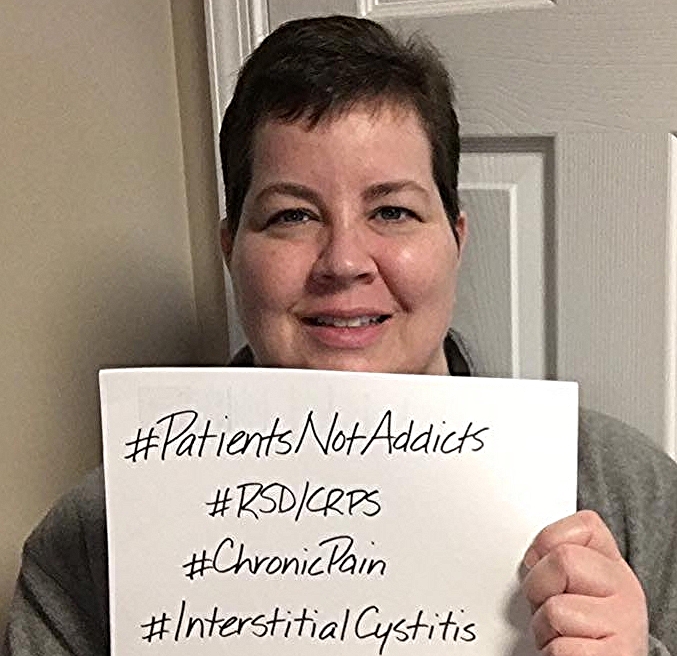New Anti-Opioid Campaigns Launched
/By Pat Anson, Editor
Two provocative anti-opioid campaigns were launched this week -- one aimed at educating parents and the other warning physicians about the risks associated with opioid pain medications.
A report by the National Safety Council claims that 99 percent of doctors are prescribing opioid pain medication longer than the three-day period recommended by the Centers for Disease Control and Prevention. Nearly a quarter (23%) of the doctors surveyed said they prescribe at least a month's worth of opioids to their patients.
Guidelines for primary care physicians released last week by the CDC state that three days or less supply of opioids “often will be sufficient” for acute pain caused by trauma or surgery, and that 7 days supply “will rarely be needed.”
The small survey of 201 family medicine and internal medicine physicians by the National Safety Council (NSC) did not distinguish between acute and chronic pain in their questions, making the findings somewhat misleading.
“For what period of time do you ordinarily prescribe opioid pain medication?” is what the doctors were asked.
Acute pain was the most common reason (87%) opioids were prescribed, but doctors said they prescribe opioid pain medication for many other conditions that the NSC considers inappropriate, including:
- 72% Chronic back pain
- 63% Chronic joint pain
- 55% Dental pain
- 55% Neuropathic pain
- 32% Fibromyalgia
- 28% Chronic headaches
The NSC’s report on the survey findings also claim that acetaminophen and ibuprofen are far more effective at providing pain relief than opioids and that doctors “overestimate the efficacy of opioids and underestimate the impact of safer alternatives.”
"Opioids do not kill pain; they kill people," said Donald Teater, MD, medical advisor for the National Safety Council. "Doctors are well-intentioned and want to help their patients, but these findings are further proof that we need more education and training if we want to treat pain most effectively."
The NSC survey also found that 99% of the doctors “have seen patients with pill-seeking behavior or evidence of drug abuse,” but handled the situation in very different ways:
- 44% Continued to treat the patient, but without opioids
- 38% Referred patient to addiction treatment
- 10% “Fired” the patient
- 5% Treated patient for addiction themselves
- 1% Refilled the opioid prescription
- 1% Never had a patient abuse opioids
Nearly 90% of doctors said it was difficult or very difficult to refer a patient for addiction treatment. Most blamed their patients, saying they were unwilling or uncooperative. Lack of insurance for addiction treatments and long waiting lists were two other reasons often cited.
The National Safety Council is a nonprofit organization focused on preventing injuries and deaths. It is funded largely through corporate donations and the insurance industry. The NSC has long had an aggressive campaign against opioids and claims they are the root cause of the prescription drug overdose epidemic.
“Opioids are being overprescribed. And it is not children reaching in medicine cabinets who have made drug poisoning the #1 cause of unintentional death in the United States. Adults have been prescribed opioids by doctors and subsequently become addicted or move from pills to heroin,” the NSC says on its website.
"Would you give your child heroin?"
Linking opioid pain medication to heroin is the focus of an advertising campaign launched this week, called "You Decide Before They Prescribe."
Created by the Partnership for a Drug-Free New Jersey, the campaign encourages parents to tell their doctors to prescribe alternative pain medications instead of opioids to their children.
“Would you give your child HEROIN to remove a wisdom tooth?” asks a new billboard unveiled in New York’s Times Square. "Ask your dentist how prescription drugs can lead to heroin abuse."
Similar ads will appear on trains and buses in New Jersey, and the organization eventually hopes the campaign will spread nationwide.
"40% of New Jersey parents still walk into a physician's office not understanding the link between prescription pain medicine and heroin – that opioids are a synthetic version of heroin," said Angelo Valente, Executive Director of Partnership for a Drug-Free New Jersey.
“The majority of New Jersey parents strongly agree that physicians should be legally required to discuss the risk of developing either a physical or psychological dependency on the prescription pain medication with patients prior to prescribing it."
PARTNERSHIP FOR DRUG-FREE NEW JERSEY

























